Scottish Referendum Rigged – MI5’s Phony Postal Votes and Ballot Boxes
 The change.org petition demanding a re-run of the Scottish referendum, “counted by impartial international parties”, has now reached 93,000 signatures as incredulous reaction mounts to the highly dubious referendum vote. Even Ron Paul expressed extreme scepticism about the result. The British media, meanwhile, is having a field day mocking the viral video footage of suspect activity at counting venues across Scotland, laughing off the fact that the only international observers to report anything about how the referendum was conducted were Russian observers, and dismissing Scots’ calls for recounts and fresh referenda as being “sour grapes” based on “conspiracy theories”.
The change.org petition demanding a re-run of the Scottish referendum, “counted by impartial international parties”, has now reached 93,000 signatures as incredulous reaction mounts to the highly dubious referendum vote. Even Ron Paul expressed extreme scepticism about the result. The British media, meanwhile, is having a field day mocking the viral video footage of suspect activity at counting venues across Scotland, laughing off the fact that the only international observers to report anything about how the referendum was conducted were Russian observers, and dismissing Scots’ calls for recounts and fresh referenda as being “sour grapes” based on “conspiracy theories”.
But are these 93,000 (mostly) Scottish citizens, and the thousands of Facebook users demanding an investigation, just deluded sore losers?
If we look at the British voting system in general, we find a somewhat less than glowing 2008 report from the Council of Europe’s human rights watchdog stating that reforms to the postal voting rules introduced by Labour made electoral fraud in Britain “childishly simple”. The British voting system was now open to fraud and the system “makes it extremely easy to add bogus characters to the voters’ lists”, the report stated.
But to conclude that the Scottish referendum specifically was likely rigged for a ‘No’ vote by ‘British’ intelligence, we need to provide reasonable evidence that the British elite have the necessary character ‘qualities’, motive and operational history to engage in such a serious crime. We must also provide reasonable cause to believe that the British government and media opinion polls, that generally predicted a majority ‘No’ vote in the run-up to the referendum, were false, that the majority of Scots intended to vote yes, and that rigging of the vote was therefore necessary. Most importantly, we must present a plausible scenario, backed up by evidence, that British agents had the opportunity to commit this most undemocratic of crimes.
Character and operational history of the ‘elite’
When we refer to ‘British elite’ we mean individuals of predominantly English – but also Scottish, Welsh and Irish – ‘nationality’, who nevertheless eschew such nationalistic monikers and instead view themselves as the ruling political and social class of what they call the ‘British Isles’. As the self-styled stewards of that political entity, they assume ultimate authority over its entire landmass (including Ireland) and population and, indeed, seek to expand their power and wealth across as much of the rest of the world as possible.
They are generally amoral, believing themselves to be above both the rule of law and the naive conventions of morality as subscribed to by most ‘ordinary’ people. They have a self-imposed ‘duty’ to ‘rule’ the world and they do so with the characteristic ruthlessness of the psychopath, although many of them may not be clinical (i.e. genetic) psychopaths but merely deeply infected from a young age by the psychopathic values that define their familial, social and political milieu. Same difference then.
The individuals of which we speak are the war criminals who brought us:
- the fundamentally illegal and immoral invasion of Iraq in 2003, based on a pack of transparent lies and resulting in the slaughter of 1.5 million Iraqis;
- the equally illegal NATO bombing of Libya in 2011 that killed up to 40,000 Libyan civilians, also based on the lie that Gaddafi was ‘bombing his own people’
- the current ongoing attempts to destroy Syrian society that have resulted in the deaths of at least 200,000 Syrian civilians – justified, yet again, on the outrageous lie of Assad ‘gassing his own people’
They are the overseers of ‘austerity’ for the masses who channeled billions in tax-payer funds to ‘bail out’ corrupt big bankers and then outrageously demanded that the shortfall caused by the bankers looting should be covered by the people, and that their insatiable greed should be balanced out by the suffering of the masses in the form of reduced social welfare coverage, pensions and third-level education cuts.
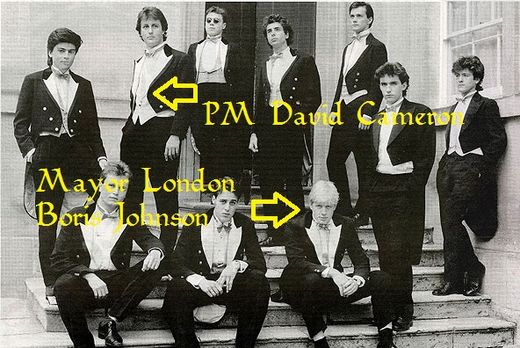
That this British elite do not hold democracy and the will of the people in especially high regard is no secret either. For one pertinent example among many, when the democratically elected Prime Minister of Iran Mohammed Mossadegh decided to take back control of Iranian oil from British Petroleum in 1953, the British elite, via British intelligence, immediately set to work: they overthrew him and installed a series of Western-educated puppet Prime Ministers under the equally puppetish Shah Mohammad Reza Pahlavi who use the hated Savak secret police to terrorize the Iranian population (with the help of the CIA and MI6) for the next 25 years.
So if the British elite were prepared to go half way around the world to protect their oil interests in the form of organizing a coup d’état in Iran and installing a dictator, what do we presume their attitude towards the threat of the loss of ‘British’ oil in their own ‘back yard’, i.e. Scotland, might be?
Past Form
Inserting large quantities of fake ballots into national elections and referenda apparently happens rather regularly. In May last year, tens of thousands of fake ballot papers were seized during elections in Pakistan. A truckload of 100,000 unofficial ballots was pulled over in Nigeria during the 2011 presidential elections. Investigators subsequently found another million fake ballots. In June this year, more truckloads of fake ballots were pulled over during elections in Nigeria. In April this year, 82 complaints were made during Afghan presidential elections concerning “hundreds of illegally filled ballot boxes, election observers barred from doing their job, interference in polls by government officials, and lack of knowledge on the part of election commission workers.”
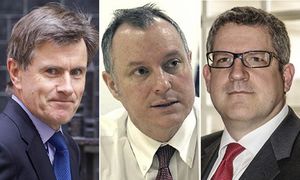
Mass printing of fake ballot papers also occurred in Ukraine in 2010. In May last year, 350,000 fake ballot papers were seized from a printing house belonging to a local councillor during Bulgarian elections. In March this year, we learned that in Romania, the vice Prime Minister Liviu Dragnea defrauded a referendum by pushing the vote numbers to over 60% of the population, the threshold needed for the vote to be valid. He was indicted for coordinating a system involving 74 other people, local party executives and activists as well as the heads of local polling stations.
‘Oh, but they’re backwards countries; that would never happen here in the civilized world!’ Can we be so sure of that? Following a surprise win for the UK Labour Party candidate in the Scottish constituency of Glenrothes in the 2010 UK general election, the result was contested by the ousted Scottish National Party candidate. Repeated efforts to access the voting registry detailing exactly who had voted for who, the plaintiff was eventually told that it had “gone missing“. Others noted a highly suspicious four-fold surge recorded in the number of postal votes for the constituency.
Motivation
Scotland is the largest producer of oil in the European Union, accounting for 36 percent of Europe’s total oil and natural gas production in 2010. While the private corporations that profit from Scotland’s oil wealth have consistently played down the extent of Scotland’s remaining hydrocarbon resources, the Scottish government’s oil and gas analytical bulletin of March 2013 estimated that there was £1.5 trillion in wholesale value left in North Sea oil and gas. With new oil fields being discovered regularly, this is likely a very conservative figure.
While Norway, a country that discovered and nationalized hydrocarbons in their North Sea sector around the same time as the UK, has put $893 billion away for a ‘rainy day’ (the world’s largest sovereign wealth fund), the City of London has been squandering Scotland’s oil and gas wealth:
Were the UK to lose that single source of oil revenue, its remaining economy would be in [even greater] jeopardy [than it already is].
The collaterization of oil reserves alone provides a tremendous amount of financial muscle that the City of London would otherwise lack. In view of how much the UK has suffered economically since the Crash of 2008, it’s clear that the Crown could not weather another setback like Scottish independence.
This is one of the major reasons for Scottish disillusionment with British rule. The Brits will bet on anything within sight, and with anything within reach. The Scots became quite literally sick and tired of being used as a chip in the ever-bustling City of London casino. The standard of living in Scotland has never been lower in recent memory and the people – rich and poor alike – now know that London has taken liberally from Scotland in order to prop up an illusion of British supremacy that is dissolving by the day. Scotland’s future is being stolen so that the City of London can maintain (i) the appearance of solvency, (ii) the continuity of banking prowess, and (iii) a strong commercial presence worldwide.
Whereas the City of London has run its business as the largest casino of all time, it has now run out of easy cash, quick assets and the necessary liquidity to keep the game tables operating. Those British bankers don’t even have the gold in their vaults which has been held in trust, on account or as collateral for the various nations that own it. That deeply disturbing fact alone represents a huge amount of UK gambling debts gone bad. The people of Scotland know this and will not have their wealth squandered by the City, which ought to be a lifetime member of gamblers anonymous.
To rub salt into Scottish wounds, one of these inveterate Unionist gamblers appears to have been tipped off about the rigged ‘No’ vote, which he used to commit insider trading. This elitist exception aside, betting trends have historically been very good indicators as to which way an election or referendum would go. In fact, it’s well known among punters that betting on General Election odds provides much better predictions than opinion polls. Election candidates themselves look to political betting markets for a guide to their chances of electoral success. A record number of people in Scotland placed bets on this referendum and a full 70 percent of the stakes were bet on Scotland voting ‘yes’ to independence. Scottish people ‘put their money where their mouth is’ because they were confident, for very good reasons, of a landslide Yes. This data is not easy to dismiss and is the strongest indicator that a large majority of people actually did vote Yes.
One notable exception to this trend was Betfair, the largest online betting company in the UK and the largest betting exchange in the world, which was so certain of a ‘No’ vote in the referendum that it paid out on No bets two days before the vote. Betfair, interestingly enough, is owned by Andrew Black, grandson of Tory MP Sir Cyril Black, and its Board of Directors is led by die-hard Tory Gerald Corbett, who has chaired some of the largest British and Irish corporations, oversaw the disastrous UK railways privatization in the 1990s, and is an alumni of the same Boston Consulting Group Benjamin Netanyahu and Mitt Romney were buddies at in the 1970s. Betfair’s advance payout on a No vote was therefore most likely part of the British establishment’s attempt to prime the public for a ‘No’ vote, primarily via fraudulent opinion polls (see below).
The threat of an independent Scotland was also a direct threat to the rest of the ‘United Kingdom’ because it would have set a successful secessionist example for Wales, Northern Ireland and even Cornwall, and for independence movements around the world, potentially jeopardizing the ‘security’ of Britain’s ‘Commonwealth of Nations’, which is merely a euphemistic term for Britain’s informal empire. An independent Scotland therefore foretold the eventual destruction of everything that the members of the English imperialist old boy’s club hold dear, both financially and ideologically – their ideology being fundamentally elitist and racist, and their finances, as a rule, belonging to someone else. In short, a potentially independent Scotland was (and is) absolutely a serious “national security” threat to these people. “National security”, always and everywhere, meaning the interests of the elite few.
Opinion Polls and the reality on the ground
As is usual in the case of a major public vote, many opinion polls were undertaken in the weeks leading up to the referendum. Most of these were conducted by British government organisations such as ‘YouGov’ and the usual suspects in the British media establishment. Almost all of these polls, from the very beginning, had the ‘No’ vote in the lead, which sharply contrasted with the evidence on the streets, social media and old-fashioned common sense. In addition, anyone who puts much faith in public polls obviously doesn’t know about British intelligence’s penchant for manipulating the results of online polls among other things.
As we have noted previously, the idea that the traditionally fiercely independent Scottish people would have voted against the possibility of having their own country, their own government, control over their own resources and, theoretically, a significant improvement in their living standards, is so profoundly contradictory that it boggles the mind. Even those council district results that returned majorities in favour of independence don’t make sense. We’re being asked to believe that barely more than one-in-two people voted Yes in staunchly SNP-supporting, pro-independence Dundee. Before anyone quibbles over these ‘generalizations’, this generally accepted view of the Scottish people was born out on the streets of Scotland, where the biggest rallies over the last couple of years have been organised by the Yes camp.
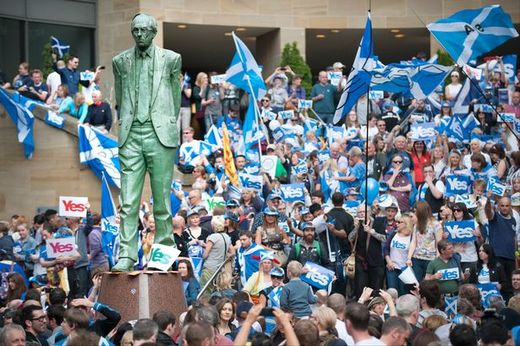
Twitter revealed that there had been 1.5 million tweets backing independence since the first televised debate on Aug 5, three times the number that backed the ‘No’ campaign. Does this simply mean that the ‘No’ camp didn’t use social media as much as the ‘Yes’ camp, or that it had a preponderance of older voters who were ‘naturally’ wary of independence? Certainly, the British media and government attempted to scare Scottish pensioners into believing their pensions would be in jeopardy in an independent Scotland, but that claim was directly refuted by none other than the UK Minister of State for Pensions, Steve Webb, who stated that Scottish pensions would be secure regardless of the outcome.
As we will see, because no exit polls were conducted, we will never know how older Scots, or any other Scottish demographic, were planning to vote, but what we do know is that, in an independent Scotland, not only retired Scots, but all Scottish people, would have seen their standards of living rise in myriad ways.
Expectations were high that Clackmannanshire, the first council to announce its results, would score a strong ‘Yes’ vote. A Financial Times reporter observed the scene there pre-referendum:
We were on a new hillside private estate – not obvious territory. The results were staggering. There was no need to eavesdrop: the nods and smiles told their own story. The split was at least 2-1 in favour of independence.
The wee county is seen as a microcosm of Scotland.
The signs were everywhere from the comfy suburbs to the sad-eyed council estates: I must have spotted 300 Yes posters against just one tiny “Vote Naw” sticker, placed anonymously on a lamppost and half scratched out. This can be misleading: silent majorities do not proclaim their opinions. But one is starting to think the Nos’ silence is not a sign of strength.
And yet we’re asked to believe that this community voted 54% No to 46% Yes. In that respect, Clackmannanshire really is a microcosm of how the Scottish referendum went. That the first council result so brazenly defied common sense may have something to do with the fact that its Counting Officer – and Clackmannanshire Council Chief Executive – Elaine McPherson, who lives in Cheshire, England, is implicated in shady deals with one-time business partner Sir Philip Green, notorious British tycoon and die-hard Zionist-for-Empire-and-Austerity.
Even the British establishment media had to feign surprise on vote night as multiple Scottish districts that were assumed to be sure ‘Yeses’ were called for the ‘No’ camp. To get an idea of just how counter-intuitive the results were, consider this post-vote analysis from a UK Telegraph report:
“At 1.30am the first of Scotland’s 32 local authorities announced its result and set the tone for the night by announcing a surprise majority for No in an area where the separatists had been predicted to win well. […]
the nationalists received another nasty surprise when the Western Isles, which is represented by SNP politicians at Westminster and Holyrood, voted No.
The separatists then lost in two more of their target areas, Inverclyde and Renfrewshire, with the former proving a particular shock. After losing in the first six council areas to declare, a Yes victory appeared to be a remote prospect.
At just before 4am the nationalists won in Dundee, said to be the most pro-separatist city in Scotland, by a margin of 57 per cent to 43 per cent.” […]
The nationalists had pinned their hopes of victory on mobilising working class Scots, particularly in Dundee and Glasgow, conducting huge campaigns to encourage voter registration. But turnout in the two cities was only 79 per cent and 75 per cent respectively, much lower than the national average of around 85 per cent. […]
The separatists were hammered in Stirling – a seat held by the SNP in the Scottish Parliament – by 60 per cent to 40 per cent. […]
Falkirk then rejected independence by a margin of 53 per cent to 47 per cent despite it having SNP MSPs and it being the base of Dennis Canavan, the chairman of the official Yes Scotland campaign.
In another disastrous result for the nationalists, Angus rejected independence by 56 per cent to 44 per cent despite it having an SNP MP and MSPs. […]
Aberdeen – another city dominated by the SNP at Holyrood – then rejected separation by 59 per cent to 41 per cent. […]
the nationalists suffered another major setback after losing in Perth and Kinross by 60 per cent to 40 per cent despite it being represented by an SNP MP and at Holyrood by two of Mr Salmond’s most senior ministers, John Swinney and Roseanna Cunningham. […]
The night had started on an optimistic note for the Better Together campaign when a YouGov survey in the Guardian showing an eight per cent lead – 54 per cent to 46 per cent – was published at 10.30pm.
Around the same time Liam Fox, the former Defence Secretary, predicted a 55 per cent – 45 per cent vote split in favour of Scotland remaining part of the United Kingdom. This matched Downing Street predictions.
Even Scottish First Minister Alex Salmond’s own constituency of Aberdeenshire East, where he was elected to the Scottish Parliament in 2011 as the leader of the Scottish National Party (SNP), produced a ‘No’ vote.
Interestingly, the Liam Fox mentioned above is the Liam Fox that was forced to resign after he was exposed as a Mossad tool of intrigue inside the British cabinet.
So, to put it bluntly, the idea that any sizable number of SNP voters and other Scottish nationalists would ever have voted against independence is akin to suggesting that supporters of largest Unionist party in Northern Ireland (and all other Northern Ireland Unionists) would vote for a united Ireland separate from their beloved UK in a referendum on that question. In short, it’s so improbable as to strain credulity.

Exit polls are polls taken at polling stations, in which a random sampling of voters are asked which way they voted. Anyone who has observed UK elections knows the results of the exit poll are the first thing that is announced on the evening news after polling stations close at 10pm. Except, as the polls closed in the Scottish referendum, this didn’t happen – there was no exit poll. As James Ball explained the day before counting began:
Exit polls are the best form of voting-related data we can ever get our hands on. They’re collected by large numbers of researchers standing outside polling stations and asking tens of thousands of people how they voted.
Campaigns are very familiar with arguing against exit polls they don’t like. The exit polls for the 2010 general election were very accurate with respect to the final results, but disagreed with the pre-election polls.
Obviously, in the context of the vote being rigged, genuine exit polls would have caused a serious problem when they differed wildly from both the pre-referendum opinion polls and the ‘official’ result, and trying to rig the exit poll was perhaps a bridge too far. So establishment media outlets like the BBC were asked to break with tradition and refrain from conducting them. With this conventional voting feature out of the way, let’s look at how the voting took place.
Multiple Voting Irregularities
Since the vote, Scots have been told the Scotland Referendum Act 2013 does not allow for a national recount and only local recounts are permitted, if the authorities are satisfied that there are “concerns about the integrity of the process” in individual councils. Mary Pitcaithly OBE (that is, an awardee by the Westminster government of the ‘Most Excellent Order of the British Empire’) is the Chief Counting Officer (CCO) and Convener of the Electoral Management Board for Scotland. In response to tens of thousands of Scots crying foul over the referendum, she announced on Monday 22nd of September that she is:
“Satisfied that all counts throughout Scotland were properly conducted and scrutinised by thousands of people representing both the Yes Scotland and the Better Together campaigns, as well as international election observers, media and police. None of these people raised any concerns during the verification, counting and adjudication stages.”
…except for the Russian accredited and experienced election observers who immediately reported that the referendum was “badly flawed” and “didn’t meet international standards.” But they’re Russian, so they don’t count. In addition, perhaps Mrs Pitcaithly is unaware of the alarming number of reports from volunteers at both polling stations and counting venues who have raised serious concerns about several aspects of the voting process.
Eligible voters (people of any nationality resident in Scotland) did not have to present ID at polling stations. They simply gave their name, which was checked against an electoral registry of eligible voters. In return they received their ballot paper, a small white paper with the question and two check boxes:
Many voters reported seeing nothing on the reverse side of their ballot paper; no unique identification number was included. The Scottish Referendum Act 2013 clearly states that an identifying number should have been included on the reverse side of each individual ballot:

The unique identification number on the back of ballot papers, most likely a bar code, was supposed to be used for tallying the total number of ballots issued during the day. This number was calculated by subtracting the number on the last ballot paper still in the book at the end of polling day from the number on the first ballot paper given out in the morning. The result is written on a sheet that is then taped to the ballot box, which is then sent to the designated counting venue for each district.
In addition, by law, the front of each ballot paper must include an “official mark”. This official mark forms part of the ballot paper artwork that is provided to Counting Officers by the CCO (the above-mentioned Mary Pitcaithly, OBE), and it must be kept secret to prevent fraudulent duplication of ballots. What this means is that the ballot papers, their design, and, apparently in some cases, their lack of unique identifying number on the back, was all the work of the office of the CCO. For someone to print their own ballot papers, however, all that was needed was access to the ballot paper design document.
According to official guidelines for volunteer counting agents (‘enumerators’) at East Renfrewshire’s local counting venue, if the number of ballots issued as recorded on the sheet attached to a ballot box did not tally with the number counted at the counting venue, the discrepancy was merely noted and the votes allowed to proceed to separation between Yes and No, and – we presume – included in the final count:
If the numbers do not match, the enumerators will be asked to recount the ballot papers. In the event the total number of papers counted matches the total on the master sheet, the papers will be removed from the table, placed in the box and moved to a storage area.
In the event the number again does not match the number on the master record but matches the number given by the enumerators on their first count, the papers will be removed from the table, placed in the box, and moved to a storage area.
In the event the number again does not match the number on the master verification sheet and is different from the number counted on the first occasion, enumerators will be asked to recount again. This will continue until the enumerators count the same number twice. Once the same number has been reached on 2 occasions, the papers will be removed, placed in the box, and moved to a storage area.
Another somewhat worrying aspect of these procedures (from an anti-fraud point of view) is that when the ballot boxes arrived at the Renfrewshire counting venue, they were merely counted and then placed in a ‘storage area’, while the volunteers had a break. The boxes were then retrieved from the storage area and the separation into ‘Yes’ and ‘No’ began. As regards the Sky News broadcast of ‘Yes votes on a No table’, it is possible that, as has been suggested, these were votes that had been initially counted, bundled into stacks of 100, and then returned to the boxes, as mentioned above, to then later be separated into ‘Yes’ and ‘No’.
A very interesting account from inside the Renfrewshire counting venue was provided by enumerator Jim Daly:
“I would like to offer the following observation.
I was an enumerator at the referendum vote count on behalf of Renfrewshire Council. The Returning Officer was David Martin, Chief Executive of Renfrewshire Council.
The vote counting was finished at 2.30am. What then happened appeared to be a mystery to me.
Mr. Martin and his assistants in suits seemed to be in a flap. This consisted of staring at laptops in front of those who were responsible for collating results and strong words were obviously exchanged.
As time marched on Mr. Martin paced around the hall rather nervously.
Then there were more meetings, up a corridor, out of view.
There was one lady with a laptop who, it appeared, was responsible for collating all the votes, but something wasn’t going well.
She was taken away by one of Mr. Martin’s assistants, out of view of the public, only to return and disconnect her laptop and leave the hall with it under her arm.
Mr. Martin still paced the floor looking uneasy, talking to what looked like aides.
As time passed from 2.30am until declaration time (4.52am), there were visible signs that those in charge weren’t happy with something.
During this process there were observers watching everything that the enumerators were doing but not what was being carried out by those recording [numbers] on the laptops.
From 2.30am until 4.52am the reason we were given for non-declaration was [that we were] wait[ing] for a TV slot….
Transportation of Ballot Boxes to Counting Venues
Within hours Glasgow police received ten reports from people being told at polling stations across the city that they could not vote because “someone of the same name had already voted.” It also emerged that polling cards were issued to minors below the statutory limit of 16, ballot papers were being sold on e-Bay, and ballot boxes were not picked up under secure conditions. Eyewitnesses at counting venues reported individuals arriving, unaccompanied, with boxes of ballot papers in the trunks of their cars.
One of the signatories of the above statement, a polling officer at a polling place, gave more background on what he witnessed:
“Last night we challenged the presiding officer regarding the transportation of ballot boxes in single-manned cars. Our ballot box was not an issue as it went straight from the hall into the van with the guys to take it to be counted. They had to wait until three personal cars arrived with boxes from other areas. These boxes were driven in cars by people on their own. These people were those who also had access to spare zip-ties and tags. We are not insinuating that anyone of these three people would have tampered with the boxes but if this is the system country-wide, we have a major problem. When asked what the rules were, the presiding officer replied:
‘I do not have that level of information. You will need to wait until tomorrow. It doesn’t matter now anyway. It is too late.’
Naturally we were shocked at her attitude and also her lack of understanding of the legal process. We wrote out a statement. Apologies, it was dark. She also made some corrections. I witnessed all three vehicles but the group of us only witnessed two. Hence we only refer to two. The process was the same for the third. I heard her ask the female in one vehicle,
‘Are you alone?’
To which the person replied,
‘No, someone followed me but they’ve gone now.’
We saw her arrive without escort. The second driver was not asked the question, despite also being alone. Why ask unless it is not protocol? Someone here is lying or not doing things correctly. Not happy at all. Not sour grapes. Just facts. Made us all feel sick last night.“
Paul Birrell from Uphall, West Lothian gave this report from his local polling station:
“I was officially asked to attend one of my local stations as a Yes representative. I was there for the whole day and night. The things I saw were criminal.
[…] at the end of the night I witnessed the boxes being sealed (bit of tape with a serial number over the posting slot). A West Lothian Council van driver had arrived before this on his OWN.
When I asked him where the guardians are, he looked at me like he didn’t have a clue what I was on about. I explained what they were, only to have him and a few of the polling officers pissing themselves and making absurd jokes along the lines of… ‘what do you think is going to happen’ […] basically trying to humiliate me, so I backed off.
It is my understanding that the driver was alone and no one checked his van, nor was there any form of safeguards in place to ensure he couldn’t take a detour or meet with someone else to change the ballot boxes!!! Pippa Plevin and one other Yes representative witnessed this too.”
Secure Ballot Boxes?
In many images of ballot boxes and according to the reports of many polling place officials, ballot boxes were sealed with cable (zip) ties.
These ties were supposed to have an identifying number on them. This was presumably another level of security to prevent the boxes being opened or replaced entirely. Once the sealed boxes arrived at the counting venue, the box should have been checked not only for secure ties, but also the number on them should have been cross-checked with the number recorded on the numbers sheet that accompanied the box. There are however many reports of polling clerks being told not to record these cable tie numbers, in one instance at least, because, “there was very little possibility of checking them at the count”.
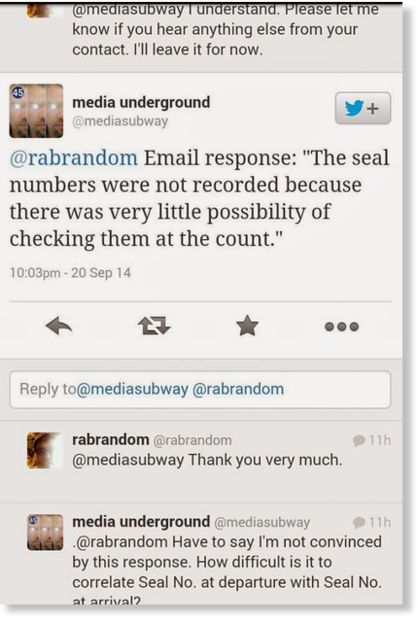 The individual who reported this was understandably skeptical about this official reason not to record the numbers since, as he notes, how hard it is to correlate a cable tie seal number at departure with the number at arrival at the counting venue? After all, the recorded number of ballot papers issued was, in theory, checked against the number in the box on arrival. What this means is that, in theory, sealed boxes could have been opened en route to the counting venue and the contents tampered with, or, the entire box could have been replaced, complete with new cable ties (and contents of course) without raising much suspicion.
The individual who reported this was understandably skeptical about this official reason not to record the numbers since, as he notes, how hard it is to correlate a cable tie seal number at departure with the number at arrival at the counting venue? After all, the recorded number of ballot papers issued was, in theory, checked against the number in the box on arrival. What this means is that, in theory, sealed boxes could have been opened en route to the counting venue and the contents tampered with, or, the entire box could have been replaced, complete with new cable ties (and contents of course) without raising much suspicion.Postal Votes
The first thing you need to know about postal votes is that anyone can send in a postal vote, even those living 5 minutes from a polling place. The Labour government of international war criminal Tony Blair changed the laws governing postal votes in 2000. According to a 2008 council of Europe report:
“The requirement for a signature and a date of birth on the postal vote application and security statement does nothing to prevent electoral fraud by means of bogus entries in the voters’ register. All a potential voter has to do is to keep track of, and match, the false signatures and dates of birth on both forms in order to successfully cast a ballot in the name of a bogus character”.
“It is recognised that it would require a considerable degree of premeditation and organisation on behalf of a party or candidate to change the outcome of an election in their favour by means of bogus entries on the voters’ lists. However, this vulnerability, and hence the opportunity, very much exists. Equally worrisome, electoral fraud committed in this manner is very difficult to detect.”
The problems with the system were highlighted by a court case concerning electoral fraud in two wards in Birmingham in the local elections of 2004. The judgement said the evidence heard by the court would “disgrace a banana republic‘.
Despite this report, nothing was done to fix the flaws in the system. In March 2014, Judge Richard Marvey, who presides over electoral fraud, said that postal voting is ‘wide open to fraud’ and should be scrapped in its current form and that ballot-rigging was now a ‘probability’ in some parts of Britain due to the extension of postal voting. While this type of ‘on demand’ postal voting had been justified by the Blair government as a way to boost turnout, it had failed to do so and instead exposed Britain’s electoral system to fraud on ‘an industrial scale’.
He told Radio 4’s File on 4 programme that in one case last year he had come across 14 different ways in which postal votes can be manipulated.
Almost 790,000 postal ballots were included in the count. This was UK record for the most postal votes ever recorded. How many of those were genuine?
Leader of the Scottish Conservative and Unionist Party Ruth Davidson made some very alarming statements on vote night regarding postal votes:
“18% of the vote is going to come out of postal ballots and we’ve [the ‘Better Together’ campaign] had people at every sample opening over the past few weeks […] we’ve been incredibly encouraged by the results of that […] from the postal votes that were cast, our side would have had a lead […] there were people in the room that were sampling those ballot boxes as they’ve been opened and they’ve been taking tallies and the reports have been positive for us.“
This directly contravenes the procedural rules laid down by the Scottish Electoral Commission, which stated that postal ballots could not be opened until they were added to the on-site polling station ballots on Thursday, September 18th. All that was permitted prior to then was to “open covering envelope ‘B’ and remove the postal voting statement and ballot paper envelope ‘A’, then check that the number on the postal voting statement in envelope ‘B’ matches the number on the ballot paper envelope ‘A'” [see ‘Stage 3’, p.33, The Scottish Independence Referendum Guidance for Counting Officers].
Most of those postal ballots were returned a full week before the referendum, providing privileged insiders like Davidson with wide open access to reliable polling data, something she admitted candidly on referendum night, and something police are now investigating:
The question remains, however, how many of the almost 790,000 postal votes did the ‘people’ from the ‘Better Together’ campaign have to open to get the impression that their side ‘had the lead’?
Even more disturbing are claims that postal ballots were first being sent to England to be ‘scanned’ and ‘have their signature checked’ before being returned to the relevant electoral district in Scotland:
This is highly unusual. All 790,000 postal votes should not have been secreted away to England for any reason. The list of Scottish residents that would be used to cross-check against the postal votes is available in the General Register Office of Scotland. We presume that Scottish council officials are capable of comparing two signatures to make sure they are the same. The fact remains that the postal ballots should have arrived directly to the relevant local council for processing and been opened only after polls had closed on the 18th. While Dawson’s peeking at the postal vote weeks in advance is clearly illegal, it probably did not directly affect the outcome. The alleged sending of the ballots to England, on the other hand, was a prime opportunity for MI5 to intercept them at one of its dedicated areas within Royal Mail distribution centres, open them, then replace the ballots with ‘No’ votes, reseal them and send them back to Scotland. Alternatively, This would explain why Ruth Davidson and her ilk were “incredibly encouraged” by what they saw in their ‘sampling’ – almost every postal vote they opened was a ‘No’ vote!
We have established that the British elite and their intelligence services have both the necessary character traits, operational history and motivation to view the idea of an independent Scotland with extreme prejudice and to take action to ensure it is never realised. We have also shown why there is reason to disbelieve the idea that a majority of Scottish people were planning to vote against independence and stay within a ‘union’ dominated by an English elite.
The next piece of the puzzle needed to complete the picture is ‘opportunity’. Did MI5 have the opportunity to rig the Scottish referendum and get away with it?
How they [probably] did it
Scotland is divided into 32 council areas of differing size and population density. In each council area there were multiple polling stations for voting. In Glasgow, for example, there were 200 such polling stations. Every resident in Scotland who registered to vote was sent a polling card which specified the polling place where they should go to vote. At least one week before voting day, it was known that 97% of eligible Scots had signed up to vote in the referendum. Since the distribution of polling stations was established several months in advance, precise information on the number of adults living in any given post code district was easily obtainable, as was access to information about the total number of votes likely to be cast at each polling place (with a little math).
Ballot boxes from each polling station had an identifying name and number attached to them that defined the polling station and box number. Depending on the number of boxes at a polling station, these identifiers were alpha-numeric or simply numbered ‘box 1’, ‘box 2’ etc. Each council area had one ‘counting venue’ where ballot boxes were brought for opening and counting. In small council areas, counting venues were small community halls; in major metropolitan areas, the counting venues were much larger. In Glasgow, for example, the counting venue was the expansive Emirates Arena:
Ballot boxes were sent out to the polling stations across Scotland in the days before the vote. Several different kinds of boxes were used. There were tall, black, plastic boxes, wider blue plastic boxes, green boxes, and a few other variations on those themes. All were opaque and ballot papers were not visible inside. The only transparent boxes used were for collecting and depositing postal ballots (well, some of them). Most of these boxes appear to have been sealed with zip ties after voting closed at 10pm on voting day, though some had traditional locks on them, while others were sealed with red tape.
Boxes appear to have been taken from polling stations to the counting venues by a variety of means. Some were taken by courier vans, others were taken by local charter buses, and still others – as mentioned above – were taken in privately owned vehicles. In short, it seems that neither a uniform set of materials were used, nor a uniform code of conduct followed, either across the country or even within the same council area.
If we take the Glasgow counting venue as an example, several hundred ballot boxes from 200 polling stations would have arrived at the Emirates Arena counting venue in a variety of different transport vehicles, sometime soon after 10pm when polling stations closed. We can perhaps establish a window for the arrival of these boxes at between 10 and 11pm.
If someone wanted to rig the referendum result, there are two rather simple and secure way to do so. The first would have been to switch a certain number of real ballot boxes with pre-prepared (and heavily No-weighted) boxes at some stage between the boxes leaving the polling stations and their arrival at the counting venue(s). Recall what the Russian observers said: procedures at the Edinburgh counting venue for verifying which ballot boxes came from where were so lax that they were unable to tell which boxes came from which polling stations. Here is an image of the two main entrances to the Emirates Arena in Glasgow.
As the several hundred boxes arrived in a short period of time, volunteers were on hand to receive the boxes and take them inside for counting. It’s important to note that few, if any, of the hundreds of people involved in the major logistical operation of transporting, receiving and counting the ballots at a major venue such as in Glasgow would have known each other. The opportunity for pre-prepared boxes to be switched prior to their arrival at the counting venue, or even switched on arrival by a ‘receiver’, is apparent. It is equally, or perhaps more, likely that the switching of ballot boxes occurred en-route from the polling station to the counting venue. Recall again the reports of a variety of very different modes of transport being used to deliver the ballot boxes – from couriers, to individuals arriving alone in cars, to people getting onto regular buses – and the accounts of there being no ‘security’ to accompany them.
The second, and not mutually exclusive to the first, way to rig the vote for a ‘No’ would have been to register a large number of fake voter names and addresses and send in hundreds of thousands of ‘No’ votes by postal ballot.
With careful planning – including access to the document used to print ballot papers; to ballot boxes (many companies produce them); to Scotland’s electoral registry; and to the true poll results showing what way the Scottish people were really planning to vote (we suggest 70+% ‘Yes’) – a team of intelligence operatives on the orders of British intelligence chiefs, with a serious investment in keeping Scotland British, could have carried out this operation. The key to it being that the fraud had been completed before the ballot boxes arrived into the counting venues so that, thereafter, everything appeared normal and the ‘official result’ could be confirmed.
Jim & Margot’s Warnings
Throughout the campaign, British oligarchs threatened a run on the banks if Scotland voted Yes – a threat they backed-up with capital flight from Scotland to the tune of 17 billion pounds just before the referendum – City of London bosses predicted dire consequences for Scottish business in the event of a Yes result, and leaks by the security services warned of “societal disintegration”. The lone public voices in Scotland striking at the source of this scaremongering were husband-and-wife team, Jim Sillars and Margo MacDonald. A former SNP deputy leader and life-long campaigner for Scottish independence, Sillars accused them of “subverting Scotland’s democratic process” and called for oil behemoth BP to be nationalised post-independence:
“This referendum is about power, and when we get a ‘Yes’ majority we will use that power for a day of reckoning with BP and the banks. The heads of these companies are rich men, in cahoots with a rich English Tory Prime Minister, to keep Scotland’s poor poorer through lies and distortions.
The power they have now to subvert our democracy will come to an end with a ‘Yes’. BP, in an independent Scotland, will need to learn the meaning of nationalisation, in part or in whole, as it has in other countries who have not been as soft as we have been forced to be.
As for the bankers: your casino days, rescued by socialisation of your liabilities while you waltz off with the profits, will be over. We will be the masters of the oil fields, not BP or any other of the majors. What kind of people do these companies think we are? They will find out.”
“That was for a weak assembly. Do you think that they will not be more engaged now that independence is on the agenda? I know an MI5 guy arrived in Glasgow. I won’t tell you how or why I know it. I know when he came.
Are you so naive, that you never think that perhaps MI5 and Special Branch are taking a role in this campaign? As their function is protection of the British State, they would not be doing their jobs if they were not.
There was, and probably still is, a section in MI5 that dealt with the Scottish national movement, headed by Stella Rimington, who became Director General in 1992, and is now Dame Stella.”
And that’s the main point. It is difficult to think of a more direct or inflammatory ‘threat’ to the very foundations of the British establishment elite than the break up of the United Kingdom and the loss (to them) of its resources and ‘human capital’. As Jim Sillars pointed out, their function is the protection of their interests in the form of a United Kingdom firmly under their control. It would therefore not only have been an extreme dereliction of their duty to fail to derail Scottish independence, they would also have been recklessly ignoring their own personal interests. In the real world, therefore, far away from the ‘freedom and democracy’ propaganda of English politicians, it is a foregone conclusion that some elements of British intelligence rigged the Scottish referendum vote.
Thursday 18th of September 2014 was chosen as the referendum date because it was the 700th anniversary of the Battle of Bannockburn in 1314, when the English army was defeated by Robert the Bruce, King of Scots. Then, as now, the hardest battle was to get the Scottish nobles out from under the English Crown. In the absence of a William Wallace to do this today, and opposed by the full array of a technologically superior and morally degenerate British state, Scots must rely on their wits to see through this daylight robbery of their right to self-determination.
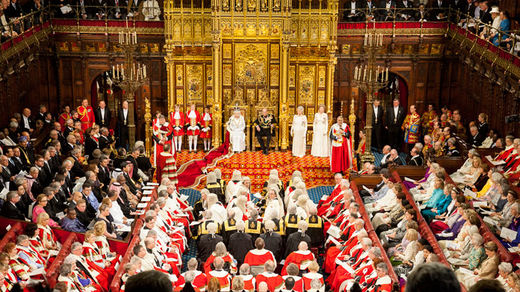
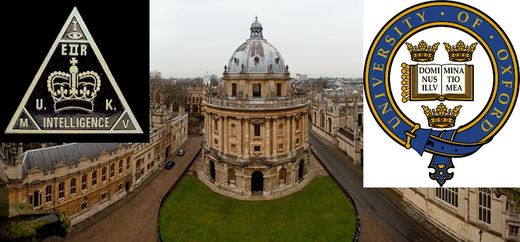
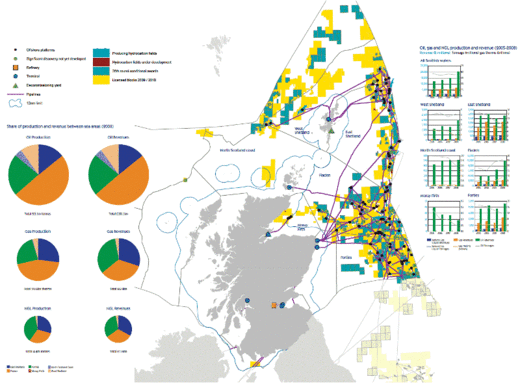
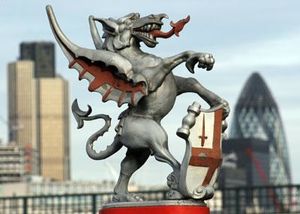
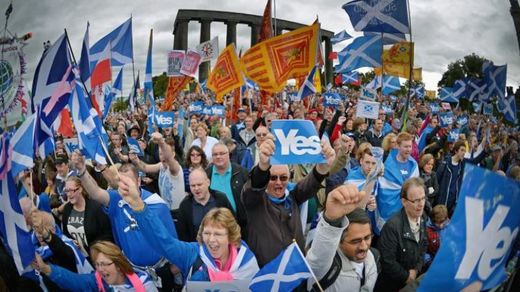
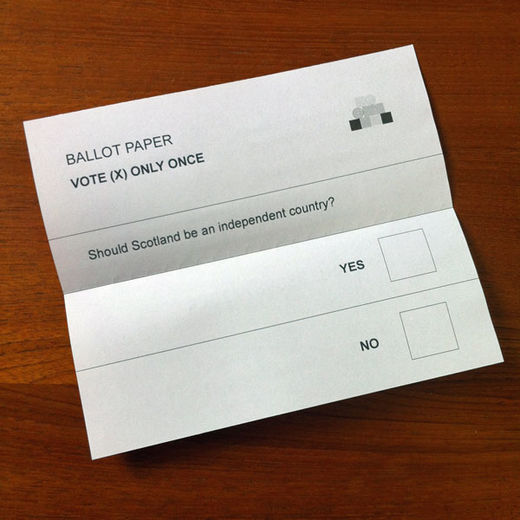
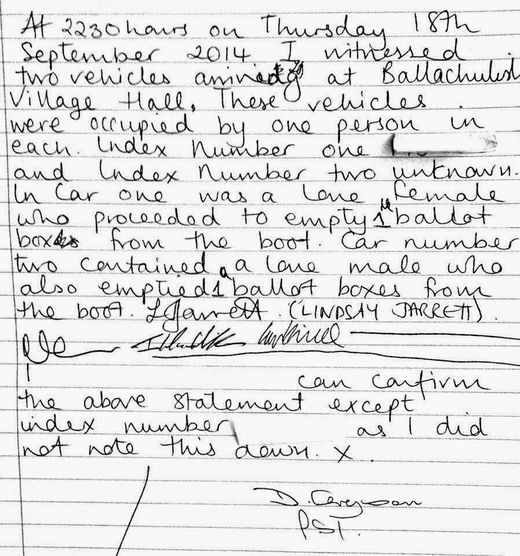
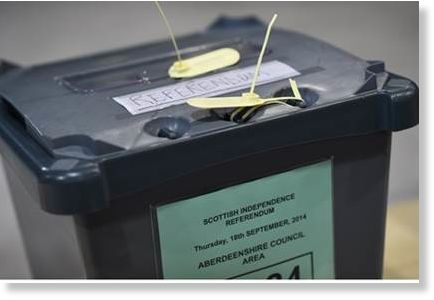
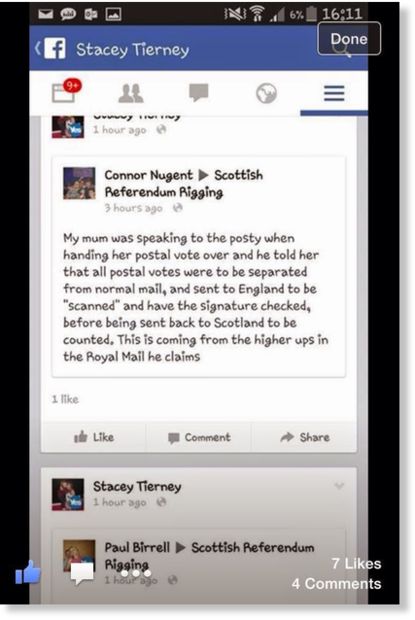
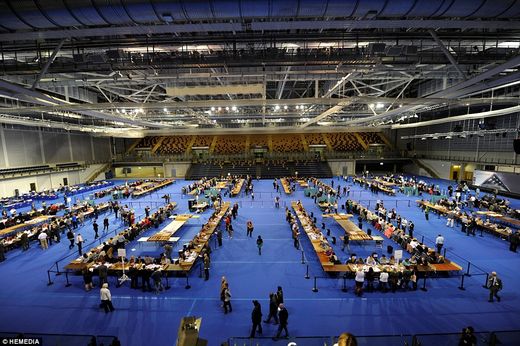
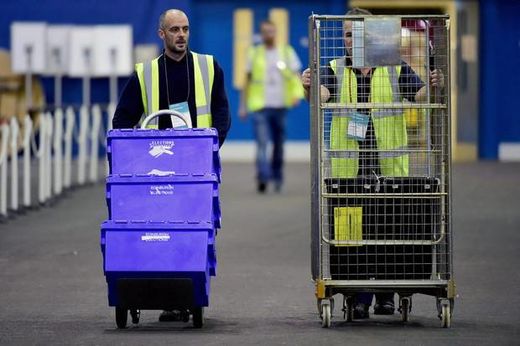
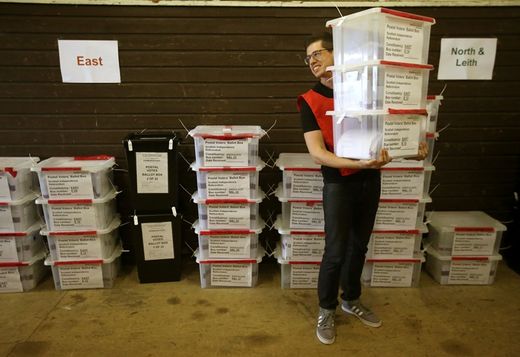
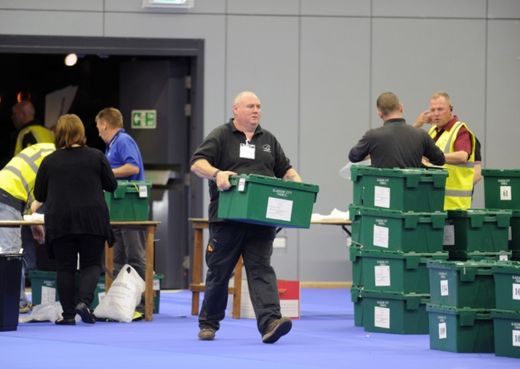
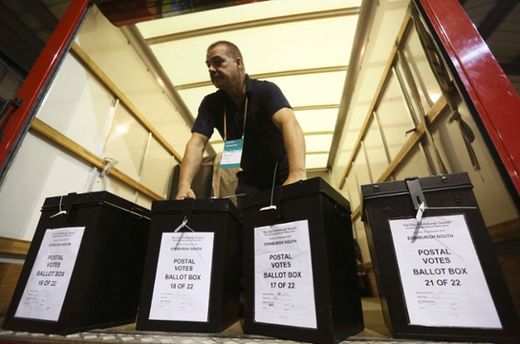
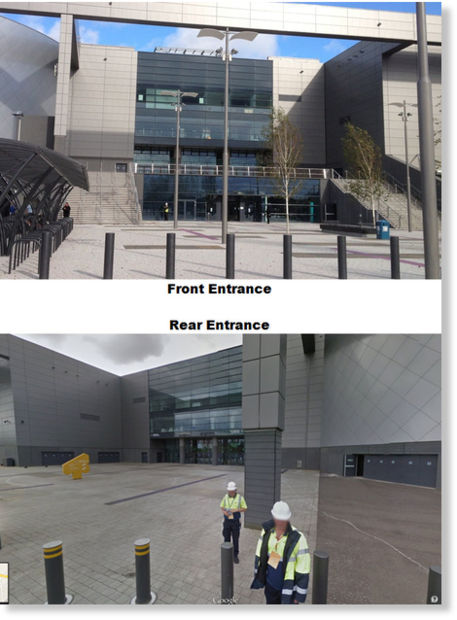
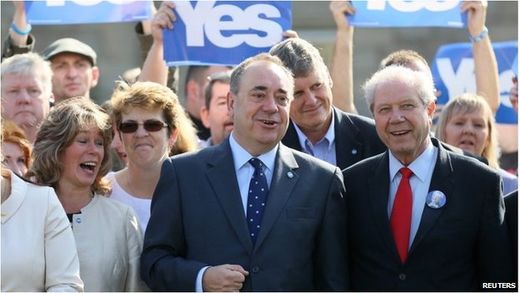
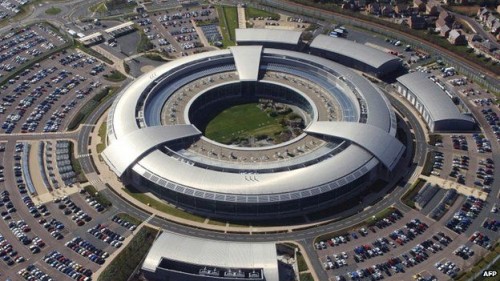
Splendid piece.
Thanks for the feedback!
As the spiritual advisor @BlackQueenLara, I got images of Scottish independence treachery, spread on 2 or 3 days. And many British spiritual advisers and investigators will agree with me on this. I can't wait to come back and read how they did the rigging.
Further, Alex Salmond will be an inspiration to me during my whole lifetime ,as he has succeeded where Scottish aristocracy and greatest warriors have failed. Too bad, Mr Salmond ignores his historical accomplishment because big press and wallets have been manipulated .
As a blogger, I don't make a big deal out of the rigging of Scottish Independence cause I don't want to be used or understood the wrong way, by the wrong people; even if this is scandalous.
God bless you.
God bless you too!
More irrefutable evidence of votes binned:
I would not trust change.org either who claim to be against the status quo and championing the cause of the underdog since they facillitaed the Dan Snow @Better Together' petition. See: https://www.change.org/p/scotland-let-s-stay-toge…
Also Mary Pitcaithly in her previous post had been a professional corporate lawer and was the second chair of the Arbuthnot Commission. These are the people who decide the mecanisms of referendum admin. The late Lord Arbunot had been the 'Queen's High Commissioner'.
She became part of the tory/labour coalition in 2012 when there was a purge of SNP provosts and adminstrators in 2012 as part of the preparation of the depolitisation fo the up and coming Bannockburn 700 celebrations and referendum when all vestiges of nationalism were to be rubbed out and the propanga machine to be initiated. Stirling was the most conspicious. She was promoted ominously quickly within Falkirk Council and has held her position there ever since.
I persoanly believe that this is where the manifold rigging attack began. The Brits appearing to be asleep during the campaign was preparing all the time. It was set up at the outset by them: See footage of her initial pre-referendum interview and how that her body language mildly at least indicates that she already knew what the outcome would be and her word would be final.
Thanks for the info Scotsbard
BOYCOTT.
Yes, Boycott every business, author, actor, movie, project, etc. that came out against Scotland’s independence. For example, J.K.Rowling, Ewan MacGregor, Paul McCartney, Mike Jagger, Emma Thompson, etc. all came out AGAINST Scotland’s independence.
Wikipedia has a list of those who supported Scotland’s independence and those who were against it:
https://en.wikipedia.org/wiki/List_of_endorsement…
Use one of your last rights left to you, which is to boycott, using your wallet, and stop enriching people who are affecting policy that you disagree with.
Good idea Maggie!
Here we go again,of course M.I.5 and the so called ellite rigged the vote.I would not expect anything less from these power crazy madmen .But us Scots are not stupid,there will be a reconing .So many people have woken up for the first time to the truth.The B.B.C bias or should I call it The Ministery of Propaganda?The media lies!,and the No politions panic and blatent lies near the end of the run up to the vote and afterwards their slaging of each other again.Shame on you,you mindles fools!
I realise this is an older post but have found some information which may be of interest to you. https://docs.google.com/document/d/13OPs4c91U4ggD…
https://www.facebook.com/mm0hgw/posts/67506291595…
I realise this is an older post but have found some information which may be of interest to you.
Need to prove that vote rigging went on , to a Unionist friend !
A useful roundup. As they used to say, "Just because you're paranoid it doesn't mean they're not out to get you!" The next referendum has to be as watertight as humanly possible. Every ballot box needs to be chaperoned, every paper and voter verified. Is anonymity even too high a price to pay in such a critical vote? The next vote may well be the last chance for decades … if ever. Don't waste it!
Exit polls can be conducted at elections because there are previous results from the same polling places and comparisons can be made to calculate swing. This conventional methodology cannot be used for a referendum with a question being asked for the first time – IndyRef2 could have an exit poll, though. The alternative – assuming a given polling station is representative and extrapolating from it – is also difficult if there is no precedent to show whether it is indeed representative.
Bannockburn was on 24 June 1314, not 18 September, by the way.
Also, it was the Glenrothes by-election of 2008 where the registers went missing, not the General Election 2 years later, where the by-election victor held his seat.